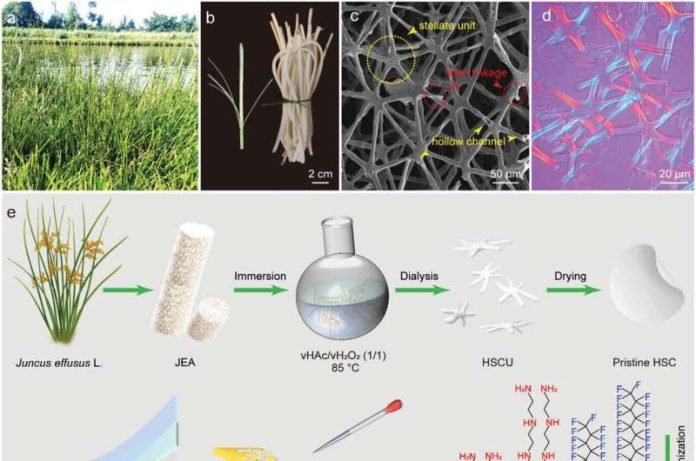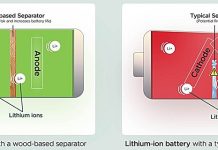
Qi Chen was a Ph.D. student just starting her research on special foam-like materials. One day while hanging out with friends, she talked about her study plans.
A friend, peeling a stem from a common weed called soft rush, pointed out that it had a spongy inside. “Maybe you could study this!” he joked. Qi Chen tossed it into her backpack and forgot all about it.
Fast-forward two years, and Qi was having a hard time with her project. She was trying to get electricity from bacteria by placing them in foam, but it wasn’t working out.
While cleaning her backpack, she found that old soft rush plant. On a whim, she decided to take a closer look.
The “Snowflake” Inside the Weed
When she examined the weed’s inside, she noticed that it had a special design, a bit like a bunch of tiny, connected snowflakes.
These little snowflakes created pockets of air, making the whole stem very lightweight. This structure was just what she needed for her research!
It turns out many water-loving plants have this kind of structure, which helps them breathe. In a water-filled environment, roots can’t get enough oxygen, so the plants have developed these air-filled stems to take in the oxygen they need.
Qi realized that this natural foam could be a game-changer for making eco-friendly materials.
A Stamp-Sized Device with Big Potential
Excited about her discovery, Qi teamed up with fellow researchers Wenjian Li and Feng Yan. Together, they created a tiny device, no bigger than a postage stamp. This device, known as a nanogenerator, can make electricity.
The nanogenerator uses a neat trick to produce electric power. Remember how you sometimes get a shock from touching a doorknob after walking on carpet?
That’s because of a thing called the “triboelectric effect,” where friction between two different materials creates an electric charge.
The nanogenerator does the same. It has two layers with rough surfaces, and when they rub against each other, they produce electricity.
Thanks to the unique “snowflake” structure of the soft rush plant, the nanogenerator was not only effective but also extremely lightweight.
It could be used as a motion sensor; you could put it in your shoe, and as you walk or run, it generates signals that can be picked up and analyzed.
A True Eco-Win
Traditional foam materials can require a lot of energy and resources to make. But Qi’s method was different.
She simply peeled the weed and dissolved it in a liquid. This simple process made it eco-friendly, as it used little energy and no oil-based products.
Qi’s new project now focuses on other uses for the soft rush “snowflakes,” including as a part of a battery and for cleaning pollutants in water.
Sadly, local authorities have started removing the soft rush plants from the area. Qi isn’t worried, though. “I’ll just have to cycle a bit farther to collect it,” she says.
In her lab, this common weed has become a valuable resource, proving that sometimes, big ideas can come from the most unexpected places.
Her groundbreaking work has been featured in scientific journals, and it shows that the answers to complex problems can often be found in the simplest of things. Like a forgotten weed in a backpack.
The research findings can be found in Advanced Functional Materials.



